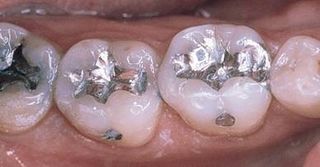Like most dental procedures today, dental implants rely on scientific discovery, research and understanding, but also experience in practical use. The practice of implant dentistry requires careful planning, surgery and restoration with a crown; it is a wonderful blend of art and experience with science. At Park City Dentistry, we will help provide you with the knowledge you need to make informed choices about your options.

Dental illustration by Dear Doctor
Titanium’s special property of fusing to bone, called osseointegration (“osseo” – bone; “integration” – fusion or joining with), is the biological basis of dental implant success. Along with replacing lost teeth, implants help maintain the jawbone’s shape and density. This means they also support the facial skeleton and, indirectly, the soft tissue structures — gum tissues, cheeks and lips. Dental implants help you eat, chew, smile, talk and look completely natural. This functionality imparts social, psychological and physical well-being.
Before implants came along, the only options for replacing missing teeth were bridges and partial dentures. We often hear patients say, "I don't want to have to put my teeth in a cup each night." With implants, you will not have to worry about taking your teeth in and out like with a partial denture. And, unlike with bridges, you can floss around your implant. Also, implants have a longer life expectancy than bridges.
One of the most common concerns we encounter when discussing implants with our patients here in Park City is whether or not the procedure is going to hurt. The surprising answer is that the implant placement actually hurts less than extracting a tooth. Most of our implant patients only need to take ibuprofen for a day or two at the most.
The big question is, “Are dental implants right for me?” If you are missing teeth and think you might be a candidate for implants, call our office to schedule an appointment for a consultation and Dr. Cody Calderwood will discuss the pros and cons of implants and what your options are.
X-ray of implant placed at Park City Dentistry.



